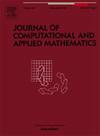Embedding representation of words in sign language
IF 2.1
2区 数学
Q1 MATHEMATICS, APPLIED
Journal of Computational and Applied Mathematics
Pub Date : 2025-02-21
DOI:10.1016/j.cam.2025.116590
引用次数: 0
Abstract
Word Embedding is currently the standard in machine learning methods for natural language processing. It is a matrix that represents the interdependence between words in a given linguistic corpus. This matrix is N x dimension, where N is the number of words in a given linguistic corpus, and the dimension is most often 100 or 300. The embedding matrix mathematically represents the semantic distance between individual words. Various methods exist for generating such a matrix for natural language, such as Word2Vec or GloVe.
In this work, we want to focus on creating an embedding matrix for Polish Sign Language (PSL). Sign language has different characteristics than the spoken language; it is the so-called spatial language, encompassing not only gestures but also facial expressions and body language. As a result, it has no official written form, though signs can be represented using glosses. With a dataset of sentences annotated with glosses, we attempted the generation of an embedding matrix that could be used in further researches on translation between Polish and PSL. For this purpose, the abovementioned Word2Vec and GloVe methods, with addition of fastText, ELMo and BERT algorithms, will be employed.
在手语中嵌入单词表示
词嵌入是目前用于自然语言处理的机器学习方法的标准。它是一个矩阵,表示给定语料库中单词之间的相互依存关系。这个矩阵是N个x维,其中N是给定语料库中的单词数,维数通常是100或300。嵌入矩阵在数学上表示单个单词之间的语义距离。为自然语言(如Word2Vec或GloVe)生成这样的矩阵存在多种方法。在这项工作中,我们希望专注于为波兰手语(PSL)创建一个嵌入矩阵。手语与口语具有不同的特点;这就是所谓的空间语言,不仅包括手势,还包括面部表情和肢体语言。因此,它没有正式的书面形式,尽管符号可以用符号来表示。我们使用带有注释的句子数据集,尝试生成一个嵌入矩阵,该矩阵可用于进一步研究波兰语和PSL之间的翻译。为此,我们将使用上述的Word2Vec和GloVe方法,并添加fastText、ELMo和BERT算法。
本文章由计算机程序翻译,如有差异,请以英文原文为准。
求助全文
约1分钟内获得全文
求助全文
来源期刊
CiteScore
5.40
自引率
4.20%
发文量
437
审稿时长
3.0 months
期刊介绍:
The Journal of Computational and Applied Mathematics publishes original papers of high scientific value in all areas of computational and applied mathematics. The main interest of the Journal is in papers that describe and analyze new computational techniques for solving scientific or engineering problems. Also the improved analysis, including the effectiveness and applicability, of existing methods and algorithms is of importance. The computational efficiency (e.g. the convergence, stability, accuracy, ...) should be proved and illustrated by nontrivial numerical examples. Papers describing only variants of existing methods, without adding significant new computational properties are not of interest.
The audience consists of: applied mathematicians, numerical analysts, computational scientists and engineers.

 求助内容:
求助内容: 应助结果提醒方式:
应助结果提醒方式:


